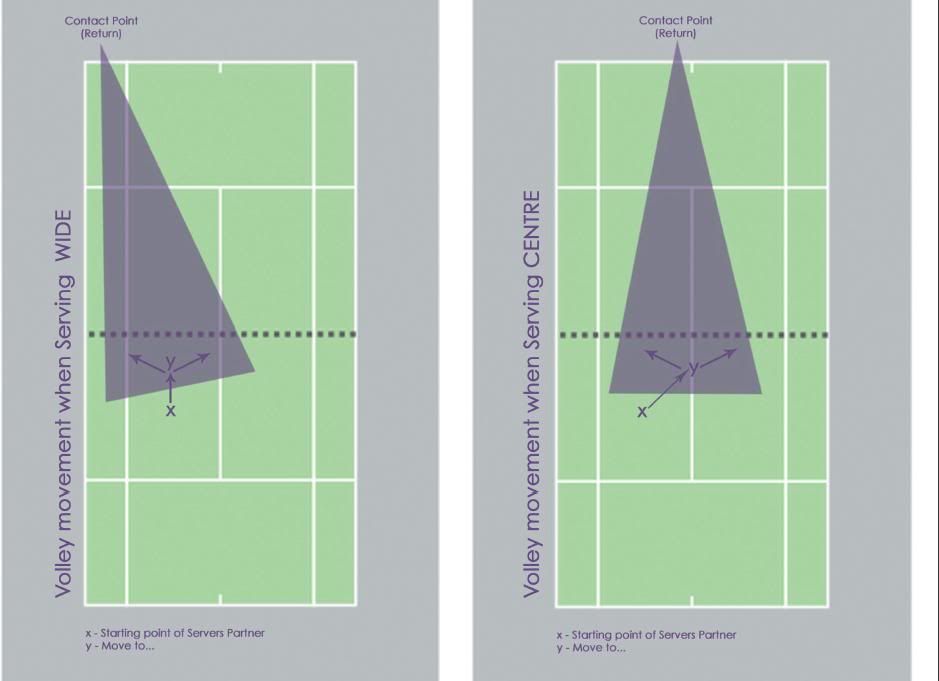Papa you had the following reply in another thread. I can't completely (accurately, probably) visualize this. Can you come up with a diagram with the triangles labeled. I would apreciate a doubles illustration more...
Yes, of course. As many of the higher skilled players realize the court is not just composed of rectangles and squares but rather shifting triangles - with singles you have three ever changing triangles. One is where the opponent is placed while the other two are basically what I refer to as kill zones - they are on either side of the opponents triangle. The three triangles represent the entire court and touch each other but constantly shift with the play. Depending on the opponents placement the triangles can become long and narrow, short and stubby or any combination.
In doubles its basically the same thing except we have five triangles (one for each opponent, one to the outside of each player and one down the middle. Sometimes these triangles become elongated and strange looking like when we have one-up & one-back. Again, the triangles are always shifting as the players change position.
So, when the opportunity arises (like being ahead on the score like 40-love) you go for one of the triangles to the outside. If you play conservative you might go down the middle more but you stay with the percentage shots - these triangles are lower percentage shots and depending on your location the percentage changes. For instance, its much easier to hit a triangle (other than where the opponent is) from closer to the net than further back.
Somewhat difficult to explain in words so I use a fairly simple series of colored ropes and pulleys which works very well. Players get to see a visual of where these zones are and how they constantly change.
Thanks,
bukaeast



